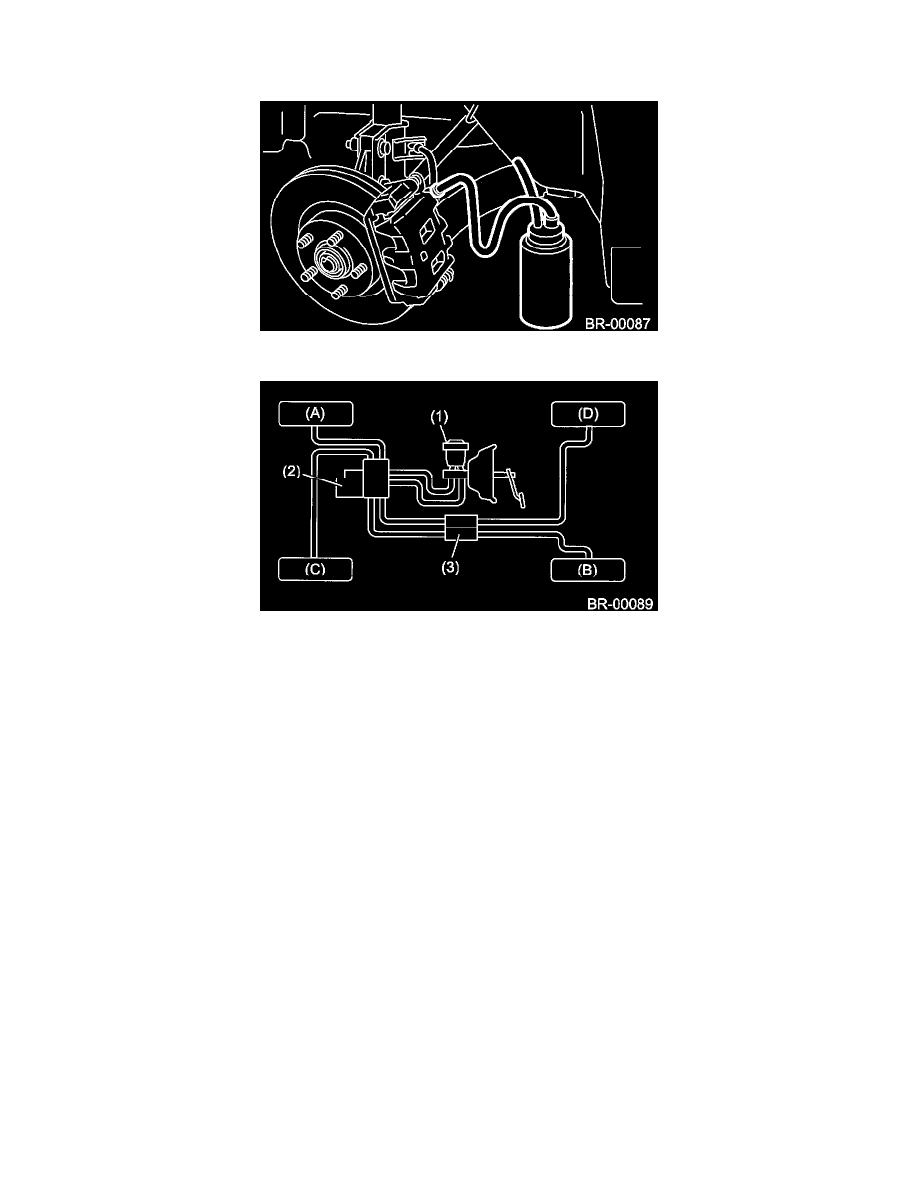9-2X F4-2.5L (2006)

Make sure that there is no leak from the joints and connections of brake system.
Fit one end of vinyl tube into the air bleeder and put the other end into a brake fluid container.
Important: Brake fluid replacement sequence; (A) Front right, (B) Rear left, (C) Front left, (D) Rear right
(1) Master cylinder
(2) Hydraulic unit
(3) Proportioning valve
Slowly depress the brake pedal and keep it depressed. Then, open the air bleeder to discharge air together with the fluid.
Release the air bleeder for 1 to 2 seconds.
Next, with the bleeder closed, slowly release the brake pedal.
Repeat these steps until there are no more air bubbles in the vinyl tube.
Allow 3 to 4 seconds between two brake pedal operations.
Important: Cover the bleeder with waste cloth, when loosening it, to prevent brake fluid from being splashed over surrounding parts.
Note: The brake pedal operating must be very slow.
Tighten the air bleeder securely when no air bubbles are visible.
Air bleeder tightening torque: 8 Nm (0.8 kgf-m, 5.8 ft. lbs.)
Perform these steps for the brakes connecting to secondary chamber of master cylinder, first, and then for the ones connecting to primary chamber.
With all procedures completed, fully depress the brake pedal and keep it in that position for approximately 20 seconds to make sure that there is no
leak evident in the entire system.
Check the pedal stroke.
While the engine is idling, depress the brake pedal with a 490 N (50 kgf, 110 lbs.) load and measure the distance between brake pedal and steering
wheel. With the brake pedal released, measure the distance between pedal and steering wheel again. The difference between the two measurements
must not be more than specified.
